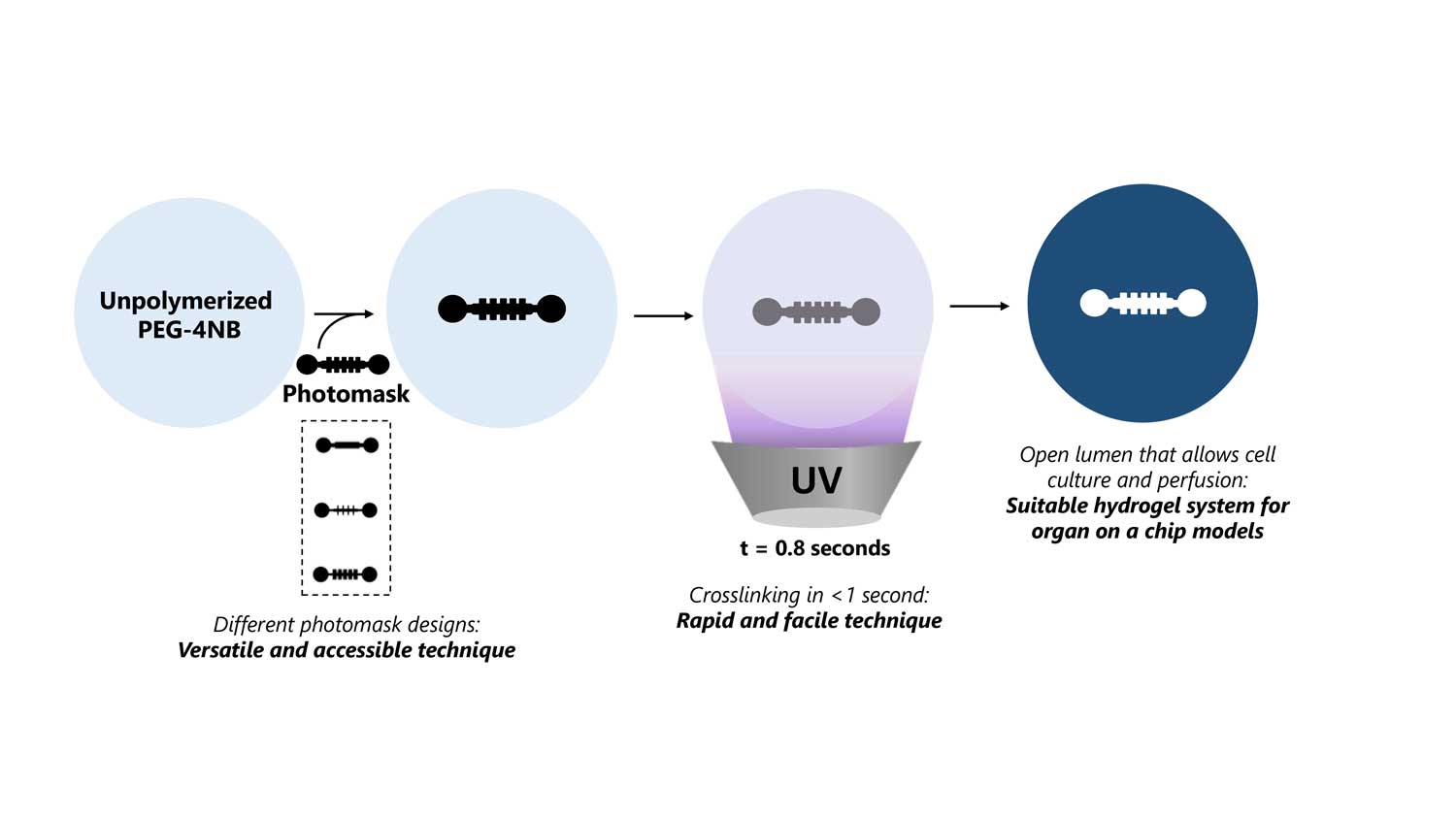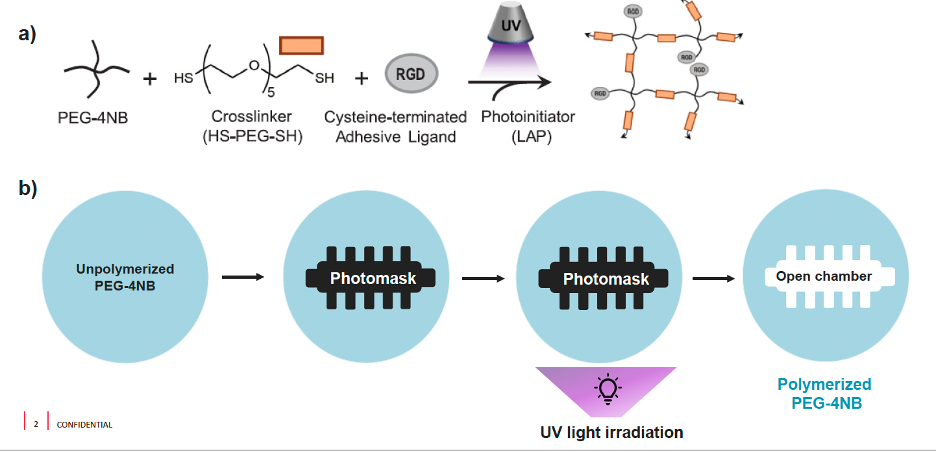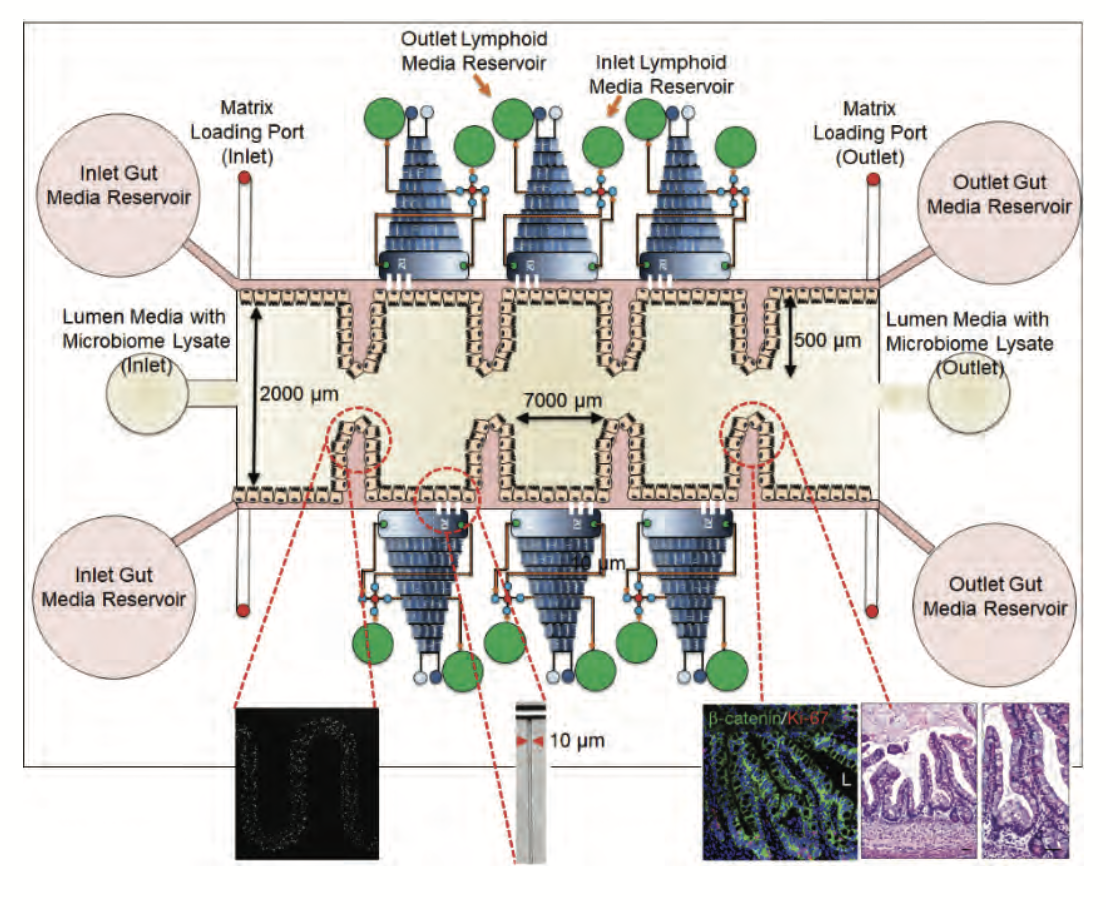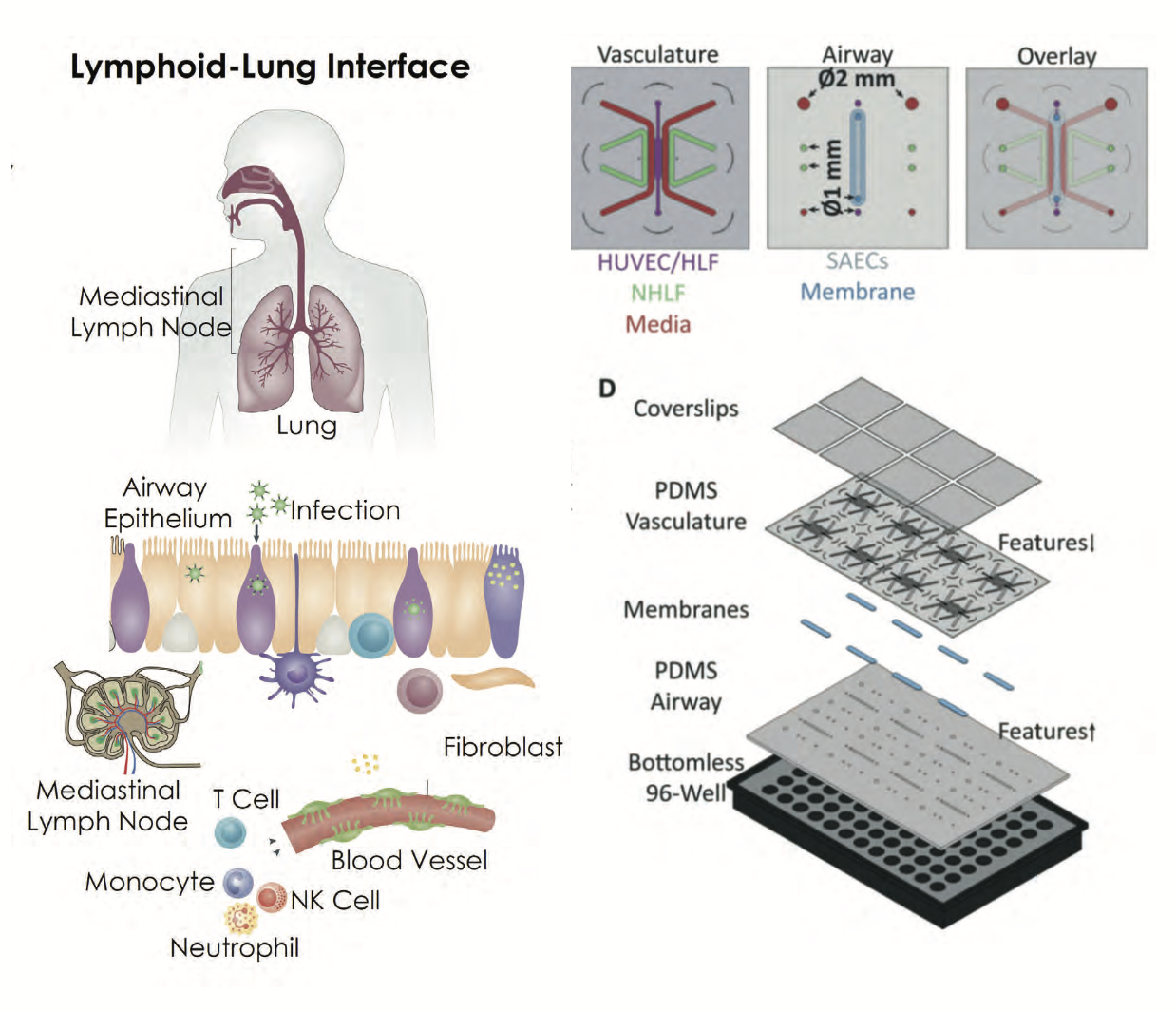This technology can quickly and easily generate complex hydrogel structures for tissue/organ-on-a-chip models. These models simulate organs and predict responses to an array of stimuli including drugs and environmental effects.
Georgia Tech has developed two methods that shorten the currently complex and time-consuming process to minutes rather than hours, while also simplifying the instrumentation required. One method generates complex patterns, including perfusable channels, using light-triggered polymerization of synthetic hydrogels along with a photomask. The second method generates complex spatial patterns, including biomolecular and chemical gradients, using functionalized synthetic hybrid hydrogels along with multiple cell types and other non-cellular to trigger tunable degradation of the matrix.
These chips can be used for diagnostic, disease modeling, regenerative medicine, and drug screening applications. Therapeutic agents can be dispersed within the hydrogel and the structure can be implanted in a patient. This technology removes some of the complexity of current organ-on-a-chip development, potentially opening up new frontiers in biomedicine research.
- Faster: Reduces preparation time from several hours to minutes
- Simplified: Generates complex patterns, including perfusable channels, using light-triggered polymerization of synthetic hydrogels and photomasks rather than current equipment-intensive methods that use laser-based patterning or ablation techniques
- Lowers regulatory burdens: Using synthetic rather than biological matrices simplifies regulatory hurdles, increases reproducibility from batch to batch, and increases tunability of the mechanical and biochemical properties of the matrix
- Broadens applications: Increases application possibilities that are not feasible with the current complex methods that are limited to biological matrices
Tissue/organ-on-a-chip models for:
- Diagnostics
- Disease modeling
- Regenerative medicine
- Drug screening
- Research tool

Synthetic gut-on-a-chip approach

Example: Fabrication of gut organoid-on-chip system, which consists of an elastomeric device with a central hydrogel chamber for subsequent organoid culture and perfusion. The central hydrogel chamber has been developed using a photopolymerizable 4-arm linked poly ethylene glycol (PEG-4NB) [a] and photolithography mask [b].

Example: Lymphoid tissue-integrated gut organoids to study vaccine mediated immunity

Example: Integrated organ-on-chip model of lymph node and lung to study bi-directional crosstalk among systemic and mucosal immunity
